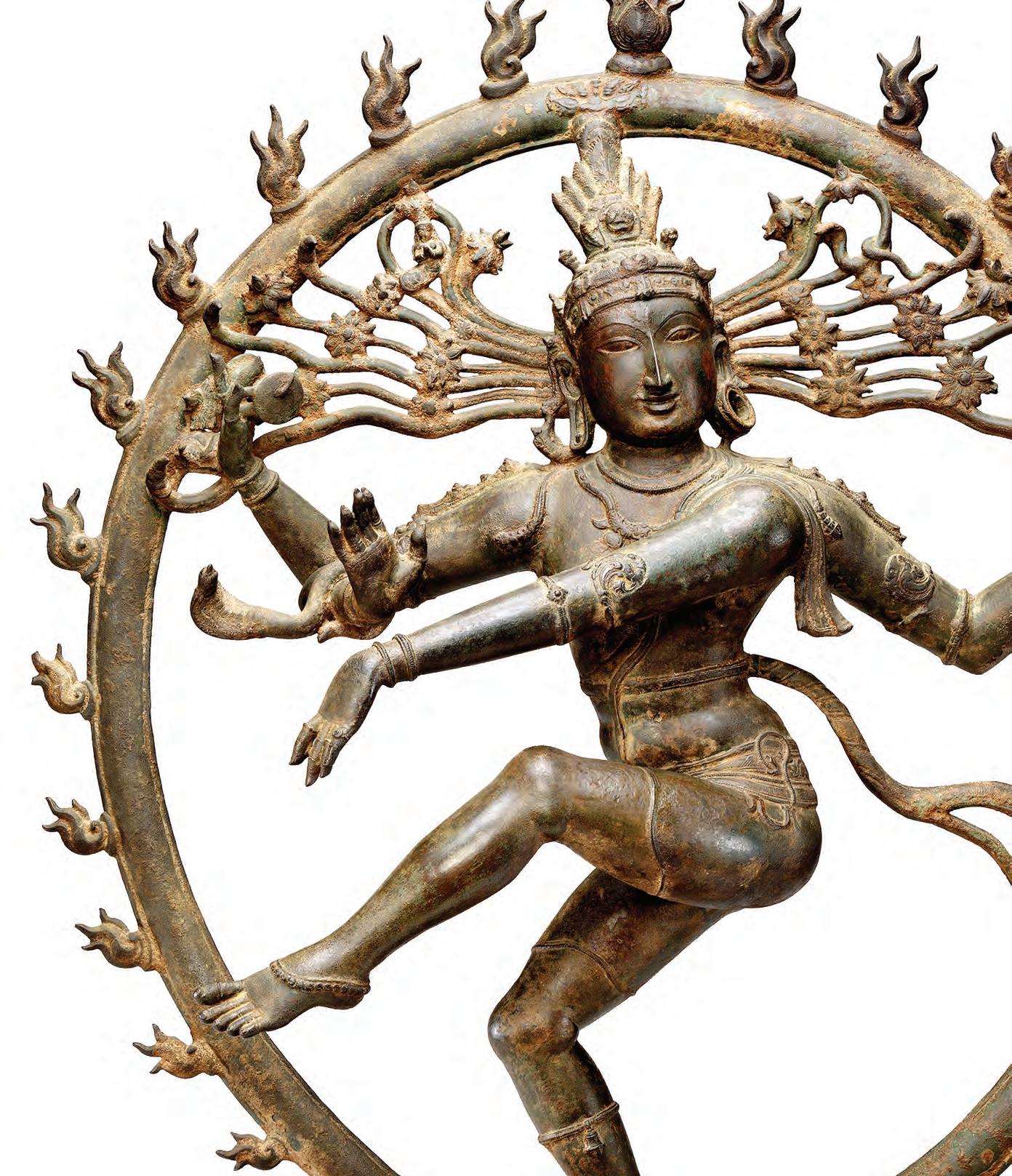
3 minute read
EXHIBITIONS
Ground dancing, to bronze sculptures of the Hindu deities Shiva and Ganesha or the Buddhist deities Vajravarahi and Hevajra, each balancing with supernatural ease and elegance on the toes of a single foot.
The development of Beyond Bollywood was also a balancing act of sorts — the result of intense collaboration and group effort over a five-year period. After the Asian Art Museum organized a panel of scholars for a two-day conference, a single guiding principle came into view. “The idea that 'dance is power' emerged as central to everyone involved,” McGill explains; “whether it’s a promise of unity with the divine through the cosmic movements of deities or a king commissioning his royal troupe to perform as a display of taste and status, dance is invested with the power to accomplish something.”

Representing five possible answers to the inquiry “What is dance accomplishing here?” the included artworks are grouped into five sections: Destruction and Creation; Devotion; Subjugation; Glorification; and Celebration. To reflect the dynamic and emotionally engaging nature of dance itself, the exhibition space of each section includes an evocative environment created by Asian Art Museum Exhibition Designer Marco Centin in which visitors are invited to experience an immersive journey of sensation. Whether the mood is reverent, awed, or celebratory, each section elicits a unique response.
In Devotion, for example, viewers are invited into the scene of an ecstatic circle dance from Hindu mythology as seen in several paintings throughout the exhibition. Krishna, an incarnation of the god Vishnu, goes deep into the forest at night and plays his flute; his music is irresistible to the women of the village, who abandon their familial duties to join him in what McGill terms “a dance of connection that enthralls the senses and transcends earthly bonds, unifying the dancers with the divine.” Devotion sets the stage for its corresponding artworks by surrounding the viewer with an environment suggesting a forest at night, where the sound of enchanting flute music beckons as one draws closer to a depiction of Krishna’s alluring dance.
In conjunction with Centin’s innovative designs, McGill notes the critical role of Preparator and Lighting Technician Lauren Wright (interviewed in this issue) in setting the mood of each space. “Lauren’s background in theatrical lighting has been enormously helpful for this show,” he says. For instance, in Devotion, McGill says Wright’s expertise informed considerations such as “what color temperature is right to suggest a moonlit forest, or how to achieve the dappled effect of moonlight coming through foliage.” Like dance itself, the exhibition design speaks directly to the viewer’s body and emotions; to enjoy the full range of sensations it provides, this show must be experienced in person.
Beyond Bollywood delivers on its title — journeying to past centuries, ranging across Southern Asia, and reaching deep into the viewer’s senses. On select dates, “Dance Dialogue” pop-ups will feature performers of Indian, Balinese, Cambodian, and Jazz dance styles looking at art with visitors and a museum educator, then moving to a designated area for a brief performance or demonstration (see this issue's calendar for details). Associated programs include a Beyond Bollywood Dance Series in Samsung Hall and monthly Family Fun Days featuring dance-themed activities for all ages. n
Beyond Bollywood: 2000 Years of Dance in Art
CATALOGUE
AVAILABLE IN THE CHA MAY CHING BOUTIQUE
$45
$40.50 Members
Beyond Bollywood: 2000 Years of Dance in Art and the Cincinnati Art Museum. This exhibition has been made possible in part by a major grant from the National Endowment for the Humanities: Democracy demands wisdom. This project is supported in part by the National Endowment for the Arts. Generous support is provided by Eliza and Dean Cash, Sumir Chadha, Vaishali Chadha and Family, Yogen and Peggy Dalal, Shashi and Dipanjan “DJ” Deb, Aarti and Sandeep Johri, Lata Krishnan and Ajay B. Shah, Fred Levin & Salle Yoo and Jeff Gray, Dipti and Rakesh Mathur, Sundar and Anjali Pichai, SACHI: Society for Art & Cultural Heritage of India, Ram and Vijay Shriram, Sanjay and Suniti Subhedar, Meena Vashee, and an anonymous donor. Sustained support generously provided by the Akiko Yamazaki and Jerry Yang Endowment Fund for Exhibitions.
Shiva Nataraja, the Lord of Dance, approx. 1125–1175. India; Thanjavur district, Tamil Nadu state. Copper alloy. Virginia Museum of Fine Arts, Richmond. Adolph D. and Wilkins C. Williams Fund, 69.46.










